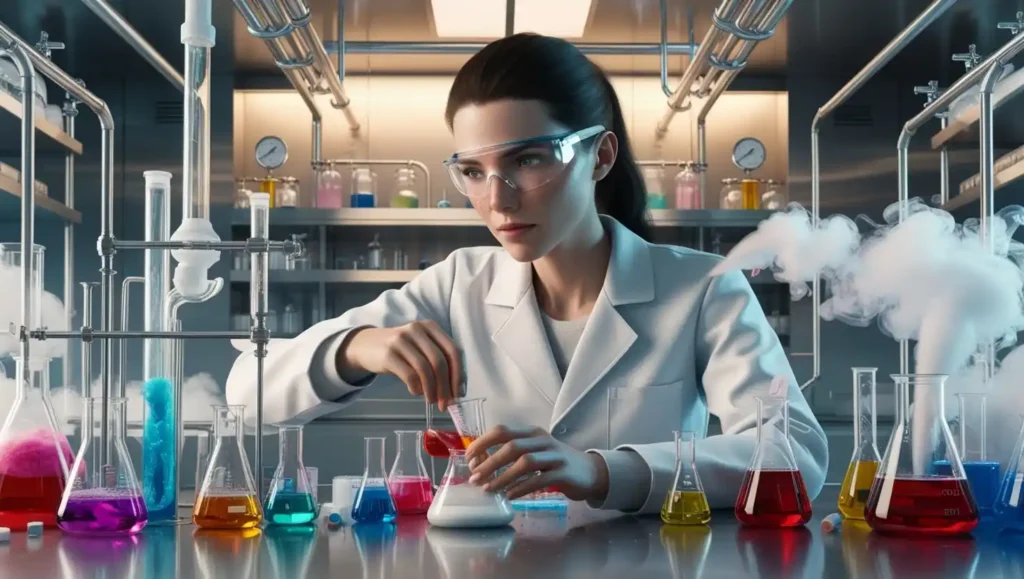
Key Takeaways
- Chemical blending is integral to various industries, impacting numerous products and applications.
- Understanding the science behind blending can improve product consistency, quality, and safety.
- Innovations in blending technology are driving efficiency and environmental benefits.
What is Chemical Blending?
Chemical blending combines different chemicals to create a uniform mixture with specific desired properties. This method is integral in various production sectors, contributing significantly to the final products’ quality, efficacy, and safety. Industries ranging from pharmaceuticals to cosmetics and food production rely on chemical blending to achieve the correct balance of ingredients in their products. With proper blending techniques and equipment, the effectiveness and safety of these products could be protected, affecting everything from a medication’s potency to the texture, aroma, and look of a cosmetic lotion. Proper chemical blending ensures that ingredients are evenly distributed, leading to consistent performance in every batch.
Importance in Various Industries
Chemical blending is crucial across various industries, including pharmaceuticals, agriculture, cosmetics, and food production. The process relies on advanced chemical mixers to ensure consistency and accuracy and adhere to stringent safety and regulatory standards. In the pharmaceutical sector, precise blends of active and inactive ingredients are critical for the safe and effective production of medications. These blends must meet rigorous standards to ensure the drugs perform as intended and are safe for consumption.
In agriculture, fertilizers and pesticides must be blended accurately to ensure the proper distribution of nutrients and active ingredients. This precision is essential to enhancing crop yields and ensuring the safety of the food supply. The cosmetics industry also relies heavily on chemical blending to produce skincare and beauty products. Consistent texture, color, and performance in creams, lotions, and makeup are only possible through meticulous blending. Moreover, the food industry uses blending to ensure uniformity in flavor, appearance, and texture, vital for consumer satisfaction and product quality.
Blending Processes and Techniques
Various techniques are utilized in chemical blending, each chosen based on the material’s properties and the desired outcome. These methods include:
- Mechanical Blending: This involves using blender agitators, paddles, and blades to mix chemicals mechanically. Different types of mechanical mixers are used to achieve a thorough mix depending on the materials being blended.
- Milling: This process involves grinding materials into fine particles to create a homogenous blend. Milling is essential when dealing with solid materials that must be reduced in size to mix uniformly with other ingredients.
- High-Shear Mixing: This technique utilizes high-speed mixers to blend ingredients thoroughly. High-shear mixers are particularly effective when blending emulsions and dispersions, ensuring the components are smoothly and consistently combined.
The appropriate blending technique is crucial for achieving product quality and properties. Different methods may also be combined to enhance efficiency and effectiveness in the blending process.
Quality Control Measures
Rigorous quality control measures are essential throughout the chemical blending process to ensure the final product’s consistency, safety, and effectiveness. Quality control involves regular testing and validation of the chemical mixtures to meet industry standards and regulatory requirements. This includes analyzing the physical and chemical properties of the blended products to ensure they perform as expected.
Furthermore, maintaining a controlled environment during blending is crucial to avoid contamination and ensure product integrity. Proper documentation and traceability of each batch are also vital components of quality control, helping manufacturers identify and promptly address any issues.
Latest Innovations in Blending Technology
Advancements in technology have significantly enhanced the efficiency and environmental impact of chemical blending processes. For instance, the development of closed-system blenders has minimized the release of hazardous substances, making the blending process safer for workers and more environmentally friendly.
Another significant innovation is the adoption of automated blending systems. These systems use advanced sensors and control algorithms to measure and mix ingredients precisely, reducing the risk of human error and ensuring consistent quality. Automated systems also streamline the production process, making it faster and more cost-effective. This Forbes article highlights these advancements.
Common Applications and Examples
Chemical blending has numerous applications, from producing daily household items to industrial products. For example, cleaning agents, detergents, and disinfectants used in homes and industries are all products of precise chemical blending. Fertilizers and pesticides in the agricultural sector undergo meticulous blending processes to ensure even distribution of active ingredients and nutrients, promoting better crop yields and farming efficiency.
In personal care, products such as lotions, shampoos, and toothpaste undergo chemical blending to ensure they perform effectively and provide a uniform quality to consumers. The food industry is another sector where blending is extensively used to guarantee uniform flavor, appearance, and texture across different batches of products. Consistency in these parameters is vital for maintaining consumer trust and satisfaction.
This resource highlights an interesting example of the significance of blending in the food industry. It explains how consistent blending ensures the uniformity of food products such as sauces, soups, and beverages.
Future Trends in Chemical Blending
The future of chemical blending is set to be shaped by the growing emphasis on sustainability, efficiency, and adaptability. As industries continue to evolve, there is a strong push towards developing greener and more sustainable blending technologies. This will likely include the increased use of renewable resources and eco-friendly materials, reducing the environmental footprint of blending processes.
Materials science and technology innovations are also expected to lead to more advanced blending techniques to meet different industries’ diverse and complex needs. Integrating artificial intelligence and machine learning in blending systems may enhance precision, efficiency, and adaptability, allowing manufacturers to optimize their processes and respond more rapidly to changing market demands.
Moreover, the continuous development of automated and digitized blending systems will drive improvements in production speed, accuracy, and cost-effectiveness, setting new standards for quality and performance in the chemical blending industry. As these trends unfold, they will likely redefine best practices and create new opportunities for innovation and growth in chemical blending.
